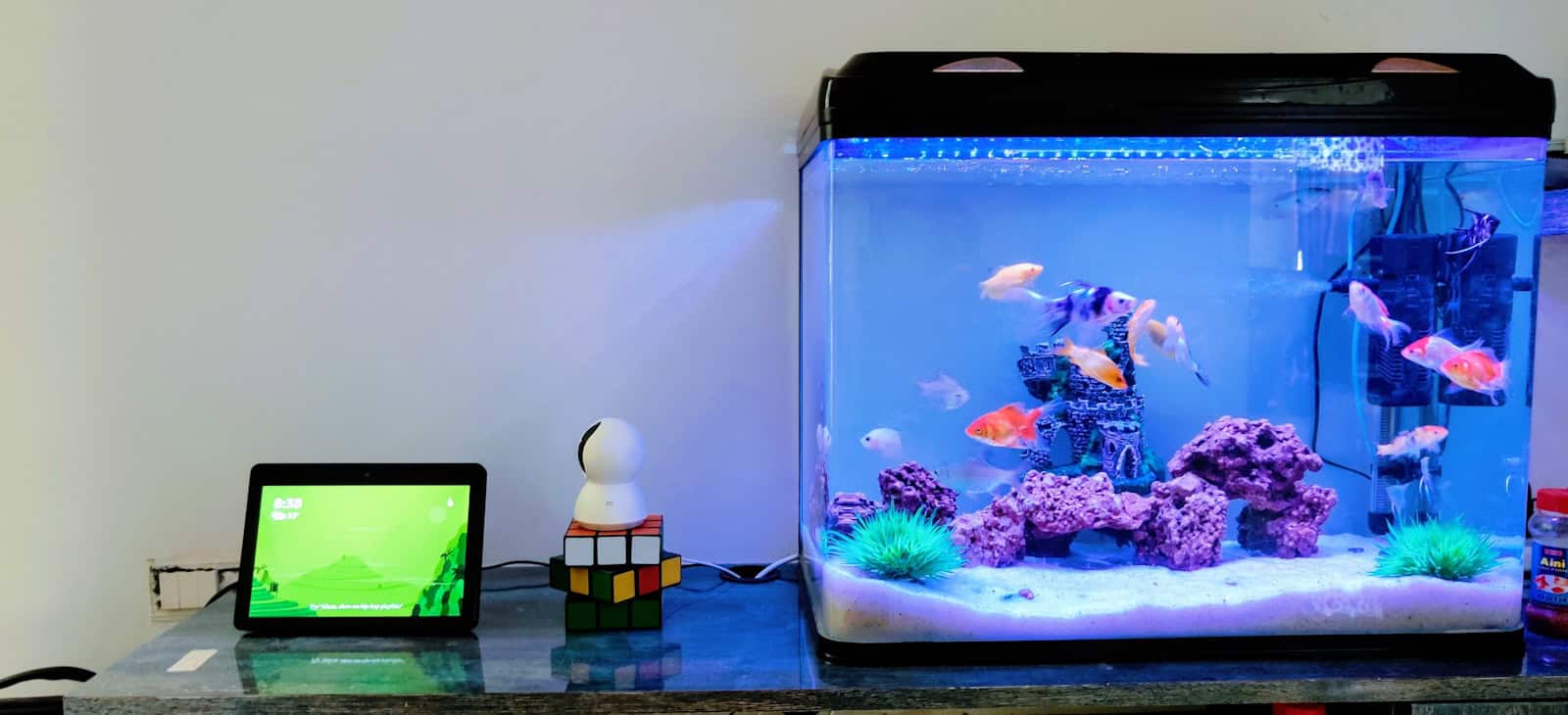Repairing a cracked aquarium might seem daunting, but it is possible with the right approach. Cracks can appear due to many reasons like impacts or pressure from the water. Worry not though—fixing an aquarium crack can be done at home with simple tools and a bit of patience. The key is to ensure safety for the fish and stability for the tank.
Always begin by emptying the tank and moving the fish to a safe temporary location. It’s essential to clean the cracked surface thoroughly. Any dirt or algae left behind can prevent the sealant from sticking properly.
Cracks can often be repaired using clear silicone sealant or aquarium-safe epoxy. These materials will help bond the glass back together securely. Be sure to apply the sealant evenly and allow it to dry fully before refilling the aquarium. Safety is crucial in the process so double-check your work to make sure there are no gaps or weak spots. Being patient will result in a durable and long-lasting fix.
Assessing and Preparing for the Repair
Before fixing a cracked aquarium, it’s crucial to assess the crack and prepare properly. This includes inspecting the crack for its severity, cleaning the area, and gathering all necessary tools and materials.
Locating and Inspecting the Crack
First, locate the crack. It can happen on the sides or bottom of the aquarium. Use a magnifying glass for a closer look. Look for hairline cracks or deeper fractures.
Check if the crack has affected the structural integrity. Carefully examine if there are any visible signs of further damage. Assess if the crack is just on the surface or goes deeper. Small hairline cracks are usually less severe than large, deep ones.
Cleaning the Area Around the Crack
Before starting the repair, clean the area around the crack. Take a soft cloth or sponge to wipe away any debris, dust, or algae. This ensures there is no dirt obstructing the repair.
Use a scraper to remove any stubborn debris. If the surface is uneven, scrub until it is even. Dry the area thoroughly using another soft cloth. The cleaned area should be free of dust and completely dry for the best results. This step is important for the durability of the repair.
Gathering Necessary Tools and Materials
Gather all required tools and materials for the repair. This may include:
- Silicone Aquarium Sealant: Safe for aquatic life
- Epoxy: For sealing, if needed
- Scraper: For cleaning off debris
- Soft Cloth: For cleaning and drying
- Magnifying Glass: To inspect the crack
- Alcohol: For cleaning
Having the right materials on hand is crucial. Double-check to ensure that all materials are safe for use in glass aquariums to avoid harm to the fish.
Executing the Repair
Fixing a crack on an aquarium involves preparing the crack, applying the sealant, and finishing up by testing for leaks. Listed below are the steps to help you efficiently repair your aquarium.
Preparing the Crack for Sealing
Drain the water from the tank. Move any fish to a temporary holding container.
Clean the area around the crack with rubbing alcohol. This removes dirt and algae. Use a soft cloth or sponge.
Dry the area fully. You can use a dry cloth or let it air dry. Make sure it is completely dry before moving on.
Applying the Sealant
Apply silicone aquarium sealant to the crack. Make sure it is aquarium-safe.
Use a caulking tool or a putty knife to spread the sealant. Make it even and smooth.
Press firmly to ensure good adhesion. Check for any gaps.
Let the sealant dry. This can take several hours. Follow the instructions on the sealant packaging for proper drying time.
Finishing Touches and Leak Testing
Inspect the sealant to make sure it has dried well.
Refill the tank with a small amount of water. Check for leaks.
If you see any leaks, add more sealant. Let it dry again and retest.
Once the sealant holds, refill the tank completely. Then, return the fish to the tank.
By following these steps, you can effectively seal a crack and make sure your aquarium is safe and leak-free.
Frequently Asked Questions
Learn how to handle a cracked aquarium, including methods for repair, materials needed, and what to do if a tank breaks suddenly.
Can a cracked aquarium be repaired without needing to be replaced?
Yes, a cracked aquarium can often be repaired without needing to be replaced. Small cracks can be fixed with clear silicone sealant or aquarium-safe epoxy. More severe cracks may need a stronger solution but do not always require a complete replacement.
What is the best method to repair a crack in aquarium glass?
The best method includes cleaning the crack thoroughly, applying aquarium-safe epoxy or silicone, and allowing it to dry. Make sure the area is clean and dry before you apply any repair material for the best result.
How can I address a hairline crack in my fish tank?
For a hairline crack, clean the area well and use clear silicone sealant. Apply it gently along the crack and let it cure for the recommended time. This should stop the crack from spreading and maintain the tank’s integrity.
What are the components of a standard aquarium glass repair kit?
A standard repair kit often includes:
- Clear silicone sealant
- Aquarium-safe epoxy
- A soft cloth for cleaning
- Putty knife or applicator
These tools help ensure a clean and effective repair process.
What should be done if a fish tank has cracked suddenly overnight?
If a tank cracks suddenly, first remove the fish and plants to a safe temporary container. Drain the tank completely. Then inspect and clean the cracked area before choosing a suitable repair method or consider if replacement is necessary.
How do you effectively seal a crack in the corner of an aquarium?
To seal a corner crack, clean the area thoroughly. Use clear silicone sealant, applying it carefully to reach into the corner. Allow it to cure fully before refilling the tank to ensure a strong seal.







